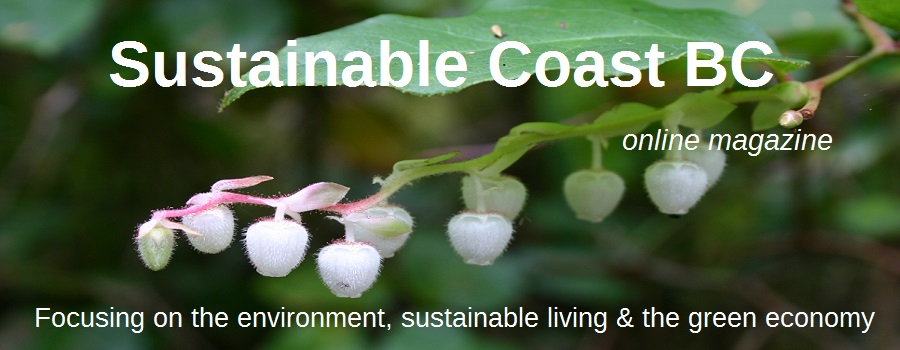Features
Fall is here and that brings welcome rain, especially after our dry summer.
It also brings mushrooms. And mushroom aficionados. Luckily for those of us on the Sunshine Coast there are abundant forests to forage for these delectable fungi. There are also a number of events, forays and classes available.
Recent events included the Mushroom Festival held by the Sunshine Coast SHROOM (Society for the Hunting Recognition and Observation of Mushrooms) in Madeira Park. Accompanying events included special dinners at local restaurants, a foray with the guest speaker and a lecture at the Botanical Gardens in Sechelt. There were also workshops and slide shows up and down the coast.
A workshop with Dr. John Field at the Iris Griffith Centre was an all-day affair that included a 2-hour class, display of a variety of mushrooms found locally, a tasting of mushrooms and an afternoon foray.
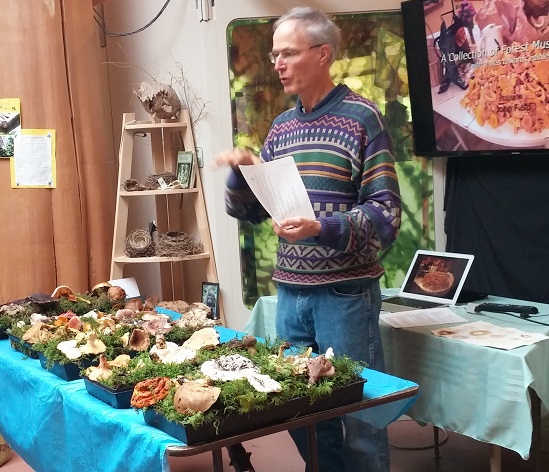
Field explained that "nothing else breaks down wood like mushrooms" and that they are responsible for decomposition and are essential to the health of the forest. They have a symbiotic relationship with the trees, giving them water and nutrients while receiving sugar. Mushrooms won't fruit unless they get enough sugars.
This year has been so dry that there are not as many mushrooms. As the rains begin to occur weekly that is the best time for mushrooms. Usually August to January. The first deep cold, -3 degrees, will freeze the mushrooms.
Field brought a nice selection of mushrooms both edible and non-edible for the class to study. 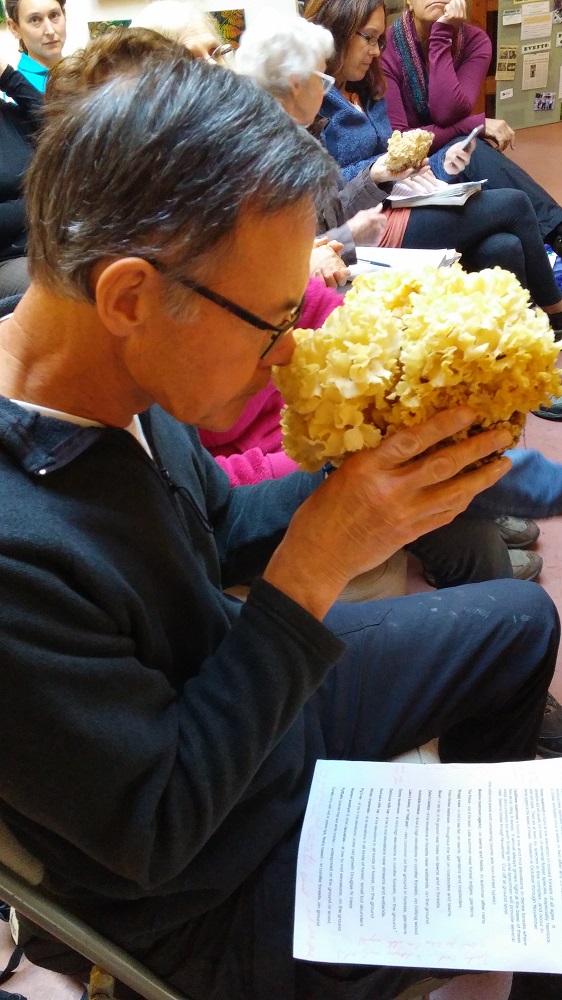 Cauliflower mushroom
Cauliflower mushroom 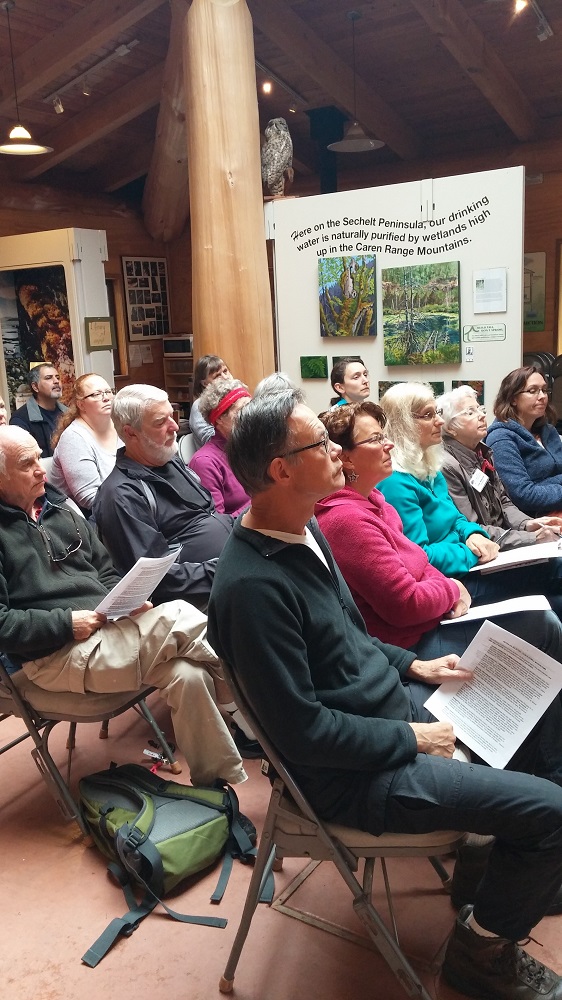
He gave out a list of choice edible mushrooms classified by ground mushrooms and wood mushrooms. Local mushrooms found on the ground include: golden chanterelle, white chanterelle, pine or Matsutake mushroom, shrimp (Woodland) russula, lobster mushroom, King boletus or porcini, hedgehog mushroom and black morel. Edible mushrooms that grow on wood include: Oyster mushroom, honey mushroom and cauliflower mushroom. There are other edible species, but these are the choice ones for your table.
Information regarding collecting mushrooms for the table included equipment needed, where to look and foraging ethics and safety. Then it was off to the forest to search for some prime edible mushrooms.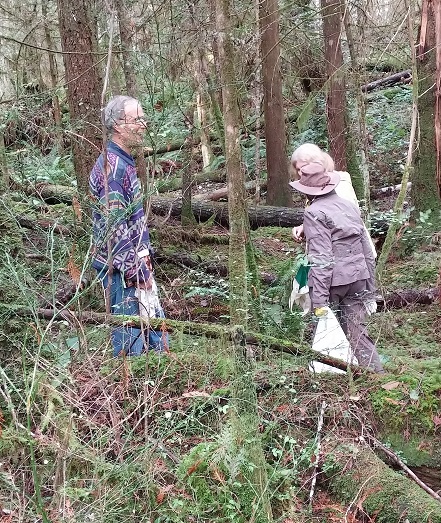
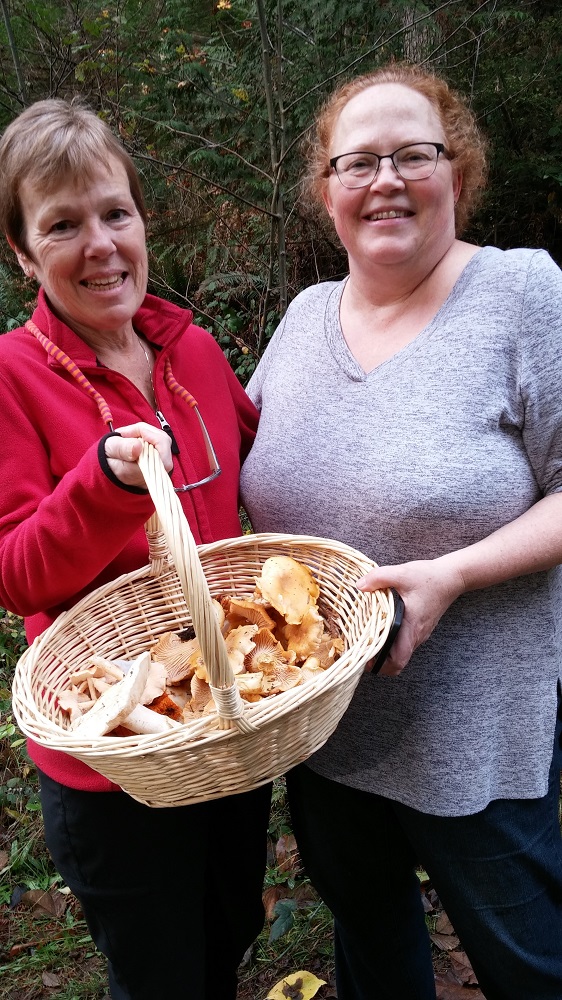
Nice harvest of pine and chanterelle mushrooms.
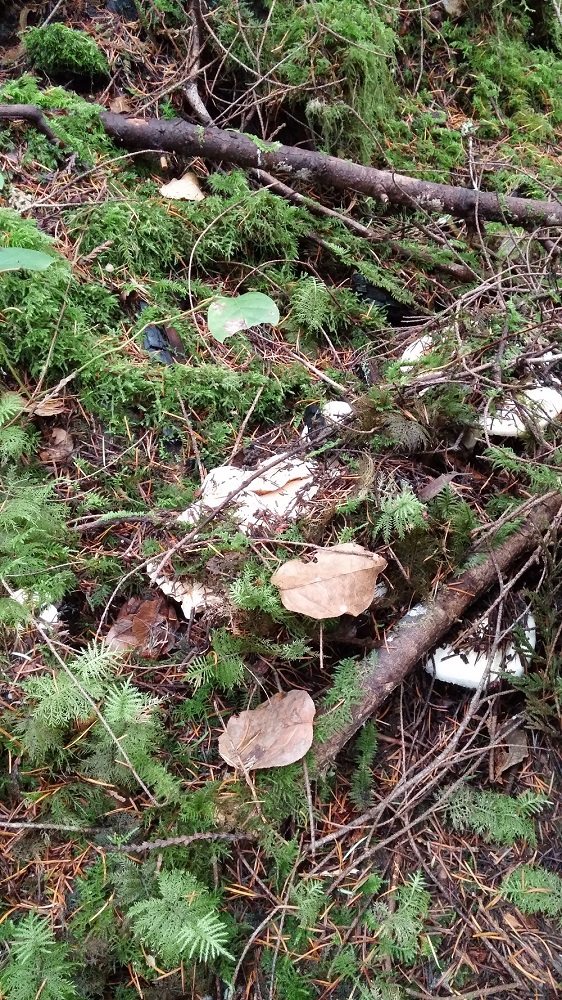 Pine mushrooms peek out of forest bed.
Pine mushrooms peek out of forest bed.
Where to Look: As a general rule in our area Field advises to look in mature forests with Douglas fir. Mature forests are 60 to 80 years old. Also avoid areas dominated by Western red cedar and difficult areas covered with salal and sword fern. South and west facing ridges tend to be dry and therefore unproductive.
Collecting equipment:
- flat-bottom basket with a handle; fine-mesh onion bag; cloth bag or paper bag in plastic liner.
- folding pocket knife
- identification guide
- wax paper or small paper bags to separate specimens
- weather proff notebook and pencil for site recording and notes
Foraging Ethics:
- Don't rake or otherwise pull away areas of moss or humus to look for mushrooms. This damages and exposes the delicate mycelium to drying.
- If you can, use an unlined basket or mesh bag for carrying your harvest. As you move about the forest, spores will fall out and "seed" new areas.
- Cut mushrooms off at or just above the base with a sharp knife this eliminates getting soil along with your mushrooms and helps minimize disturbance and exposure of the fungal mycelium.
Safety precautions:
- If foraging alone, stay close to roads or trails; take a partner for deeper woods.
- Novice hunters should only take those mushrooms that they are positive are for eating; a beginner's course in identification is advised. Contact http://scshroom.org/ to join a foray.
- A compass is useful for finding your way out of the forest. It's easy to get disoriented when you are on flat or rolling terrain. Use a map.
- Take a cell phone if you have one.
- For long treks, take a backpack with essential safety gear, drinking water and food.
- Be Bear Aware.
Recommended books and field manuals:
- The New Savory Wild Mushroom by McKenny & Stuntz. Greystone Books.
- Common Mjushrooms of the Northwest by Sept.
- All That the Rain Promises, and More by Arora. Ten Speed Press.
- Mushrooms of the Pacific Northwest by Trudell & Ammirati.
- Mushrooms Demystified by Arora. Ten Speed Press
- Matchmaker - a downloadable program and id website. www.matchmakermushrooms.com
